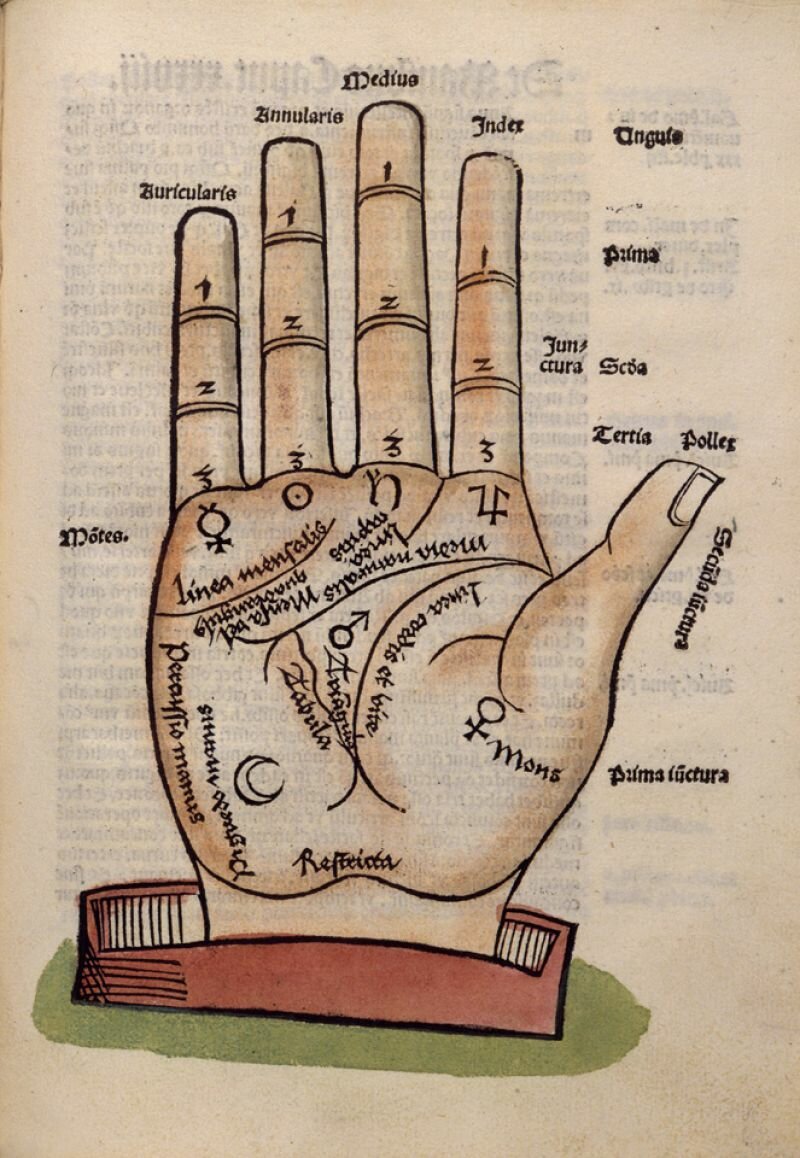
Our palms have been the subject of interest for thousands of years. Human handprints found in prehistoric caves show this fascination stretches as far back as the Stone Age. The study of the lines on our hands, known as palmistry or chiromancy, appears to have originated in China and India and came to the West with the Roma peoples. The practice is now found throughout the world, and remains a popular way of telling our fortune.
The practice of palmistry has itself experienced mixed fortunes over the years. The coloured illustration of a palm in this section has been taken from a book published in 1501 by Magnus Hundt the Elder, lecturer at the University of Leipzig. The fact that academics at this time were writing about palmistry gives a good indication of its reputation. However, things were to change with the advent of Pope Paul IV (r. 1555-59) and Pope Sixtus V (r. 1585-90), both of whom issued papal edicts against the study of the divinatory sciences. Thus the practice of palmistry was widely discredited and forced underground.
Nowadays, the reading of palms is a much less dangerous endeavour.
The three principal lines used in palmistry are the life line (the large crease encircling the thumb joint, to predict future health and vigour), the heart line (the crease made by bending the fingers towards the palm, to predict emotional events) and the head line (starting between the thumb and the index finger and running horizontally across the palm, showing cognition). Diagrams of the hand highlighting these three lines can be seen in the 16th-century German printed book and the 17th/18th-century Turkish manuscript shown in this section. The separate origin of each image and the similarity to modern palmistry shows how pervasive this ancient art has been through time and culture.
Palmistry diagram by Wellcome Library / Wellcome Images is licensed under a Creative Commons Attribution 2.0 UK: England & Wales License .